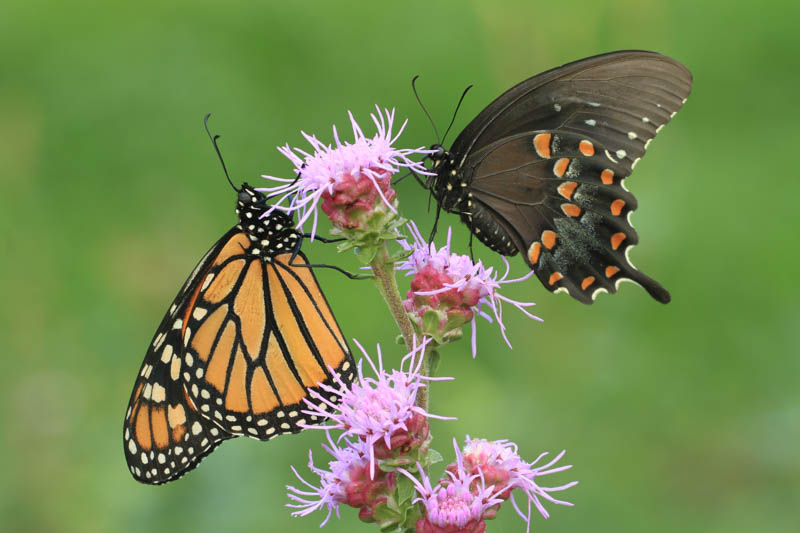Gayfeather: A Garden Gem with Many Attributes
Habit: Gayfeather, scientifically known as Liatris, is a charming perennial plant with a distinctive upright habit. It stands tall and erect, reaching heights of 1 to 5 feet (30-150 cm). Its linear leaves form a basal rosette at the base of the stem, from which a slender, vertical spike emerges. This spike is adorned with numerous tiny, tubular florets, creating a captivating bottlebrush-like appearance.
Hardiness: Gayfeather is renowned for its adaptability and hardiness. Native to North America, it thrives in a variety of climates. It is commonly grown in USDA hardiness zones 3 to 9, showcasing its ability to flourish in a wide range of conditions.
Flowers and Bloom Time: The most striking feature of Gayfeather is its striking spikes of flowers. These flowers are typically purple or pink, though white varieties are also available. The bloom time of Gayfeather falls in mid to late summer, adding a burst of color to the garden when many other plants have concluded their flowering cycle. The dense spikes are densely covered in florets, creating a visually appealing and vibrant display.
Uses: Gayfeather is a versatile perennial that serves multiple purposes in garden design. Its upright habit and slender spikes make it an excellent choice for adding vertical interest to the landscape. It can be used as a border plant, complementing shorter perennials and ground covers. Additionally, it fits well in meadow-style gardens, naturalistic landscapes, and mixed perennial beds. Gayfeather also makes a stunning cut flower, providing an enchanting focal point in floral arrangements.
Benefits: Beyond its aesthetic appeal, Gayfeather offers several benefits to your garden. Firstly, it is a pollinator magnet, attracting butterflies, bees, and other beneficial insects with its nectar-rich blooms.
Furthermore, Gayfeather is relatively low-maintenance, making it a practical choice for gardeners of all levels. Regular deadheading (removing spent flowers) can encourage prolonged blooming, and cutting back the foliage in late fall or early spring promotes healthier growth.

